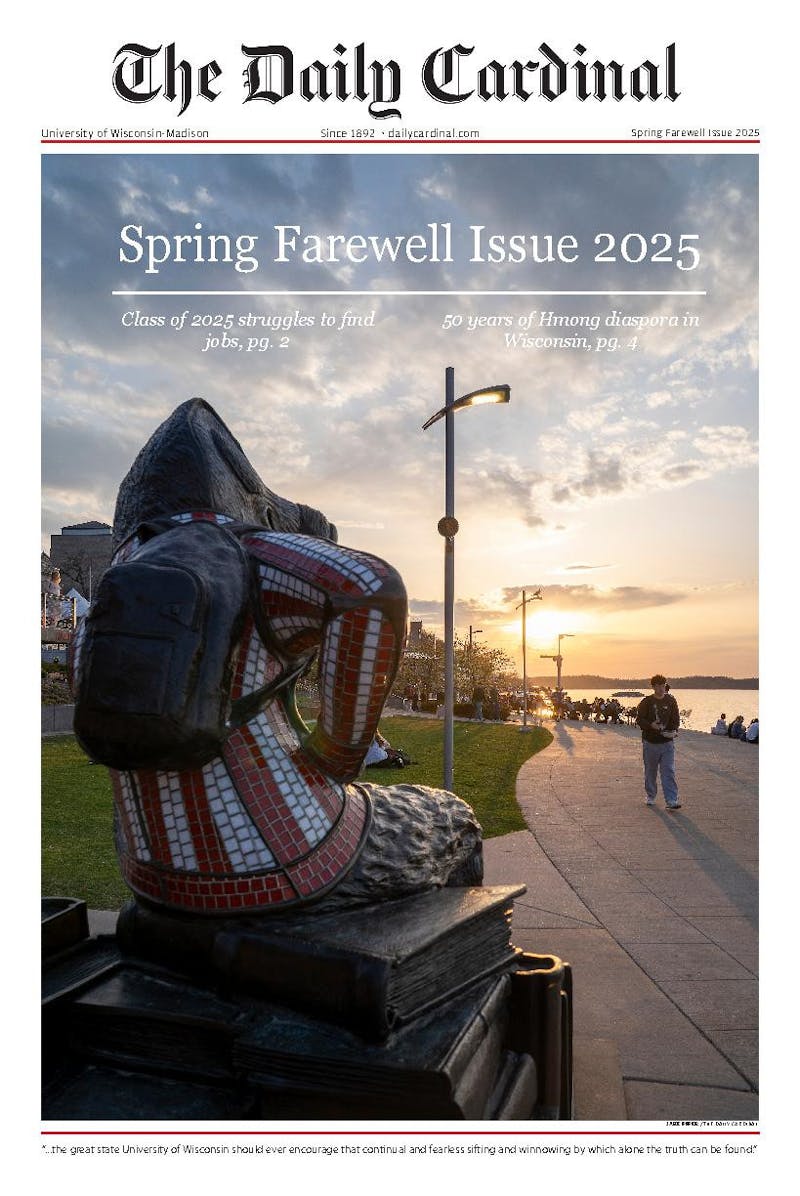The exchanges between students sitting in the O and P sections of Camp Randall during football games in the fall and the treaties negotiated between American Indians and British colonists in the eighteenth century may have more in common than one initially perceives. Indeed, the land that currently bears the name Camp Randall was originally American Indian property. Furthermore, the exchanges between colonists and indigenous peoples probably included a few choice words.
This comparison does not seek to trivialize the plight of the American Indian in the face of brutal colonialism. Rather, it serves to inform university students that the land we traverse daily is rooted in Native American history-which long precedes University of Wisconsin history. Yet, while students know the general history of Native Americans, they have little knowledge or interest in the enduring presence of Native Americans on campus.
Any student who has walked along Observatory Drive on the way to class, exercised at the Natatorium, swum in any of the Yahara Lakes (including our beloved Lake Mendota) or strolled along Lakeshore Path has unknowingly encountered an enduring landmark of American Indian history.
Preserved between buildings and sidewalks at the top of Observatory Hill, a bird effigy mound built between 500 and 1100 A.D. slopes upward with extended wings. However, many students who tread by or on this effigy mound remain unaware of its historical importance. The geographical remnants of American Indian history should be respected and recognized by each individual, and not trivialized as mere geographical bumps or holes.
Beyond the negligence of the geographical landmarks of American Indians, the presence of American Indian students at the university goes virtually unnoticed-their population at the university approaches a mere 230, less than three-fifths of 1 percent of the student body. The disparity of representation these students face is a daily obstacle in their effort to find a voice for American Indians on campus.
In an effort to break the silence of this underrepresented culture, Wunk Sheek, an American Indian student organization on campus, sponsors year-round events to facilitate awareness of their culture. Wunk Sheek hosted various cultural awareness projects throughout November, Native American Heritage Month, and hosted their annual Pow-Wow on campus this February.
Additionally, the American Indian Studies Program seeks to stimulate and support interest in American Indian history and culture, as well as several other dimensions. The program is currently reviewing curriculum requirements for receiving a certificate in American Indian studies.
Still, these resources go largely untapped by the majority of the student body. Students seem to view American Indians with a sense of historical pity. However, students might feel differently about the importance of American Indians if they recognized that, if not for the destruction of thousands of burial mounds and the coercion that resulted in land treaties, there would be no Camp Randall, Natatorium, Bascom Hall or University of Wisconsin.
To reverse this trend, students should recognize that American Indians have a stake in Madison's past, present and future. Their legacy in Madison endures in the various geographical landmarks dotting the landscape and in the voices of the students who represent this rich culture. Understanding and recognizing American Indian culture may foster a true appreciation for their influence on campus.
Accordingly, students should take a course through the American Indian Studies program if their schedule permits the opportunity, question the legitimacy of retaining the name \Squaw Bay"" on the south side of Lake Monona or take a date on a romantic walk along the lake shore to view the few remaining preserved burial mounds.
American Indians have faced a long history of exclusion, brutality and dishonesty from the Caucasian majority. By recognizing the significance and enduring presence of American Indians on campus, students may gain a new respect for the stadium that we cheer in during football season, and view the land we call campus with a debt of gratitude toward the American Indians who originally called it home.
opinion@dailycardinal.com.





